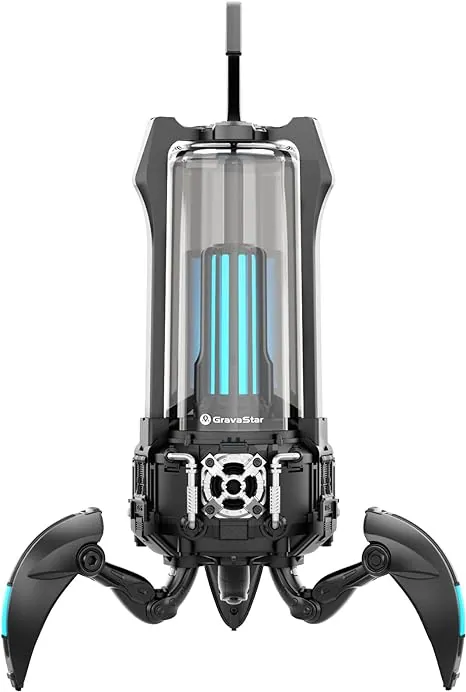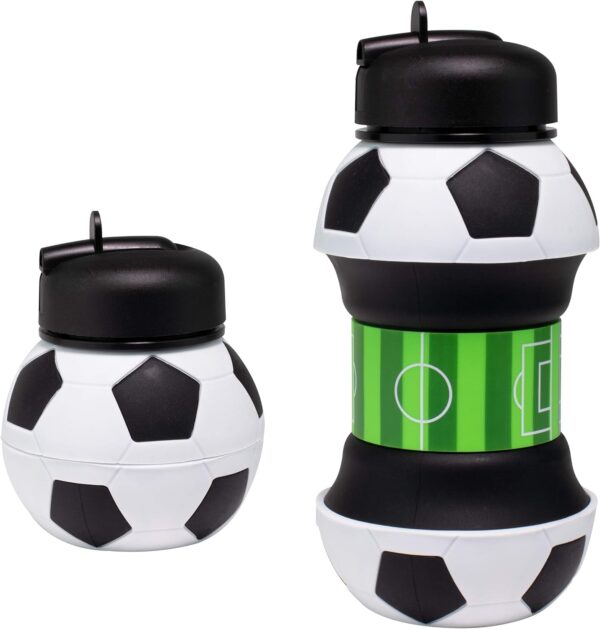A unique combination of design, music, and mood-setting vivid lighting is the GravaStar Supernova Bluetooth Speaker. With the Supernova, you can have an engrossing audio-visual experience indoors or out, wherever you are. Permit me to share some details about this interesting speaker with you:
- Design: The Supernova combines nostalgia with hyper-modern sci-fi influence, incorporating a classic lantern design. Its hard-core metallic body is made from zinc alloy, making it both eye-catching and durable1.
- Lighting: The built-in light makes the Supernova more than just a speaker—it’s also a lamp for your space. Choose from three different light modes with eight different colors:
- Dynamic Light Mode: For a mesmerizing visual experience.
- Single Color Mode: Select from eight different colors.
- Camping Light Mode: Mimics the gentle flickering of a campfire, creating an enveloping ambiance paired with immersive audio1.
- Audio Quality:
- Powerful Sound: With 25 watts of power, the Supernova delivers deep, impactful bass and room-filling audio.
- DSP Acoustics: The 3″ full-range speaker and 0.5″ high-frequency tweeter create clear mids, crisp highs, and immersive sound.
- True Stereo Sound: Pair two Supernova speakers for dynamic audio like never before.
- Portability: The Supernova comes with a handle, making it a unique travel accessory. Take it camping, hang it in a tent, or guide you through hiking trails. It offers up to seven hours of usage time and a long Bluetooth connection distance of 20 meters1.
- Specifications:
- Power: 25 watts
- Bluetooth Version: 5.3
- Playtime: Up to 7 hours
Can you tell me more about DSP Acoustics?
Yes, please allow me to elaborate on DSP Acoustics. Digital signal processing, or DSP for short, is the process of controlling, enhancing, and working with digital audio signals1. DSP makes advanced audio processing methods possible, including:
- Equalization: Equalization is the process of modifying an audio signal’s frequency balance to enhance its quality or achieve a desired tone.
- Compression: Reducing an audio signal’s dynamic range in order to increase its loudness or consistency is known as compression.
- Spatial Audio Processing: The reverberation, direction, and distance of an audio stream can all be adjusted to create a realistic or immersive sound environment by spatial audio processing.
Additionally, DSP can be used to produce specific effects like chorus, flanger, reverb, echo, etc3. DSP consists of a number of parts, including:
- Digital Signal Processors (DSPs): DSPs, or digital signal processors: chips or microprocessors with specific functionality created to swiftly and effectively complete DSP tasks.
- Filters: Filters are mathematical operations that add or subtract specific frequency components from an audio stream.
- Algorithms: Algorithms are collections of guidelines or directives that specify how to handle DSP operations on an audio input1.
Contemporary audio applications, including home audio devices, automobile sound systems, Bluetooth speakers, and conference systems, frequently use DSP4. Along with producing fresh and fascinating sound effects, DSP may enhance the fidelity, clarity, and realism of digital audio signals.
How does GravaStar Supernova use DSP Acoustics?

The Bluetooth speaker GravaStar Supernova produces loud, high-fidelity sound using DSP Acoustics. Its official website12 states that it has a 0.5″ high-frequency tweeter and a 3″ full-range speaker that produces clear mids, sharp highs, and deep bass. Additionally, it features an adjustable sound system that produces rich sounds that bring your music to life.
A unique environment is created in your space by the speaker’s embedded light, which changes color and pattern in time with the music. The futuristic-looking speaker has metal legs, a glowing eye, and a robot-like head. The speaker is appropriate for outdoor use because it is robust and water-resistant3.



